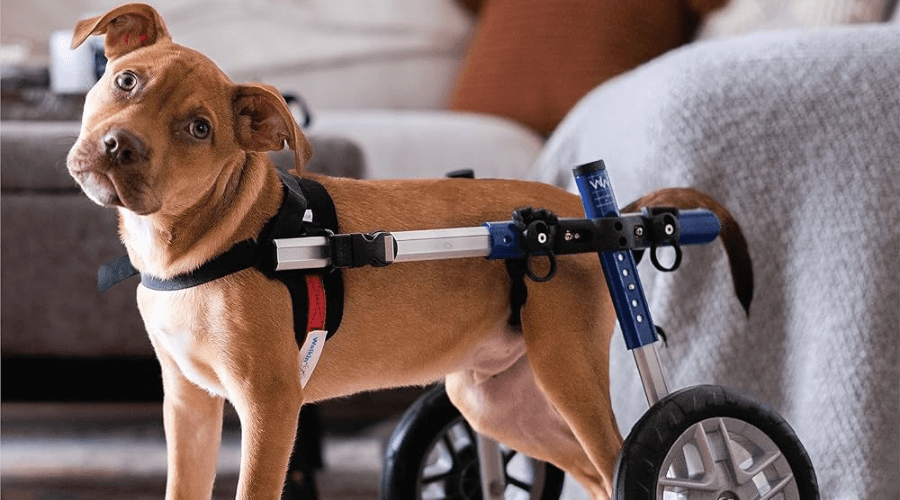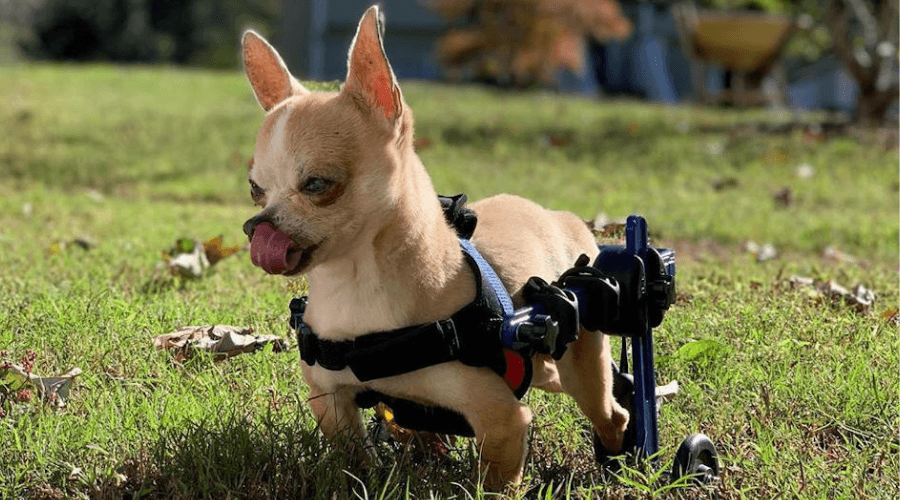How to Train Your Dog to Use a Wheelchair
Train your dog to use a wheelchair
Dog Wheelchairs Are a Game Changer
It is a big decision to invest in a wheelchair for your dog with the hope that it will vastly improve their quality of life. Dog wheelchairs allow dogs with mobility issues to regain their freedom and independence, enjoying their favourite activities. These devices benefit dogs with injuries, arthritis, paralysis, or disabilities that affect walking. A wheelchair helps these dogs live healthier, happier and in some cases longer lives. Allowing dogs to play, exercise, and socialise.
How Long Will It Take for My Dog to Use the Wheelchair?
The adjustment period varies. Some dogs take only a few days, while others may need a few weeks. Patience is key, as each dog’s comfort and adaptability are unique. Age, temperament, and physical health also play roles. Patience is key initially to ensure positive reinforcement during the training period. Getting the fit as comfortable as possible will also ensure a smooth transition for your dog to accept the wheelchair.
If your dog has no rear legs, training may take longer as you work to find the correct height and weight balance in the wheelchair. Adjusting the fit properly will help your dog feel secure and comfortable, building their confidence to move independently.
Equally dogs with paralysed rear legs may need some time to adjust to having their legs secured in the stirrups while walking. Taking extra time initially to properly fit the frame and help your dog feel comfortable with the device builds trust. This can make the process smoother.
Read our guide to choosing the right wheelchair for your dog.
Training Step-by-Step Guide
- Introduce the Wheelchair Slowly
Start by letting your dog inspect the wheelchair. Place it near their bed or favourite space to help them get used to its presence. Encourage them to sniff and investigate without pressure or it being intimidating. - Practice Short Sessions
Attach the harness but only for a few minutes on the first day. Reward your dog with treats and positive reinforcement during these short sessions. - Gradually Increase Time
As your dog shows comfort with being in the harness, fit them into the rest of the wheelchair frame. Increase the time in the wheelchair. Start with five-minute sessions, gradually working up to longer durations. Always praise and reward your dog after each session. - Introduce Movement
After your dog feels at ease in the wheelchair, encourage small movements. Lure them with treats or a favorite toy to motivate gentle first steps indoors. At first, stay on flat smooth surfaces to make walking easier. - Move to Outdoor Practice
Once your dog walks comfortably indoors, take them outside. Start with short walks in quiet areas, allowing them to adjust to different surfaces. Gradually introduce them to longer walks and more varied terrain.
Proper Fit - How Do I Know My Dog is Comfortable in the Wheelchair?
A proper fit is essential. The wheelchair should support your dog’s body without restricting movement.

Check the following:
- Harness Fit: The harness should sit snugly but not tightly. Your dog should be able to move without any signs of discomfort.
- Balanced Weight: The wheelchair should distribute weight evenly, preventing strain on any one area.
- Easy Breathing: Make sure the harness does not press against your dog’s chest, affecting breathing.
- Adjust for Comfort: Adjust straps and supports as needed. Watch for signs of discomfort, such as excessive panting, shaking, or reluctance to move.
Please feel free to contact support@petsownus.co.uk with a short video demonstrating your dog in the wheelchair if you are not sure it is fitted correctly.
How Long Can My Dog Wear It Every Day?
Most dogs can wear a wheelchair for one to two hours daily, depending on their stamina and physical needs. Begin with shorter sessions, such as 15-30 minutes, and observe their reaction. Avoid prolonged use during the initial days to prevent fatigue or strain.
As your dog builds strength, you can gradually extend the time, but always prioritize their comfort. Make sure your dog has breaks for stretching, resting, and drinking water. Never leave your dog unsupervised in the wheelchair, as they may need assistance with obstacles or adjusting to new movements.
Final Thoughts
Training your dog to use a wheelchair requires time and patience. With gradual steps, plenty of encouragement, and a focus on comfort, most dogs adjust well and regain joy and independence.
Browse ALL Dog Wheelchairs
 British Pound
British Pound



